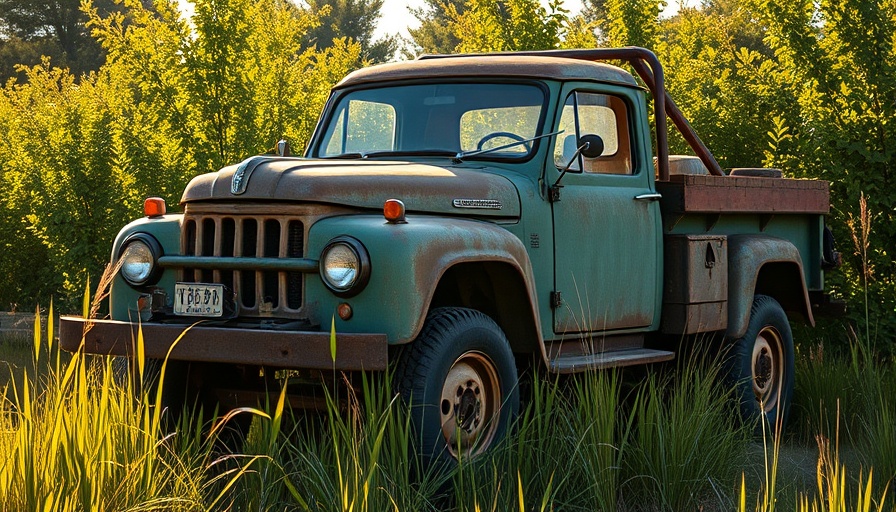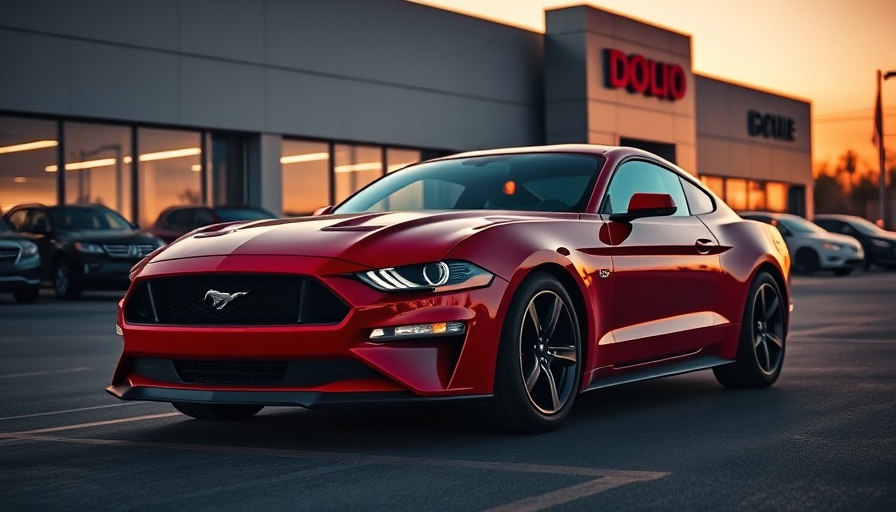
The Legendary Appeal of Eleanor and the Muscle Car Evolution
In the realm of American muscle cars, few names resonate like Eleanor, famously depicted in the cult classic film Gone in 60 Seconds. A custom 1967 Shelby GT500, Eleanor's striking silver body and bold black racing stripes have captivated car enthusiasts and pop culture fans alike. As she races through the hearts of gearheads, she also embodies the spirit of evolution within the muscle car community.
From the Classic GT500 to the Modern Mustang GTD
Fast forward to today, and we see Ford's latest offering—the Mustang GTD—a stunning example of how far the brand has come while honoring its storied past. Unlike its predecessors, including the celebrated Shelby GT500, the Mustang GTD represents a shift towards motorsport autonomously. It's not an evolution of a single model but rather a leap into the future of performance vehicles, drawing design inspiration from success on the racetrack.
The Bold Legacy of the Shelby GT500
The Shelby GT500, launched in the late 1960s, established itself as an emblem of power and performance, directly linking to Ford’s racing aspirations. Each iteration catered to enthusiasts who craved not only speed but advanced engineering. The final production model of this line, the 2020-2022 GT500, boasted a supercharged 5.2-liter V8 engine, setting a record with 760 horsepower.
Equipped with cutting-edge features such as a dual-clutch 7-speed transmission and advanced aerodynamics, the GT500 was more than just a muscle car; it was a finely-tuned machine that appealed to the modern driver, offering a blend of raw power and sophisticated performance.
Mustang GTD: The Motorsports Game Changer
While Eleanor's charm lies in her cinematic history, the Mustang GTD points to a thrilling future. As Ford pivots toward a motorsport-focused strategy, the Mustang GTD draws its lineage from the successful Ford GT3 race car and embodies a new spirit of athleticism. Its carefully curated design merges elements from racing technology with daily usability, aimed at offering a unique blend of performance and style.
A Nostalgic Look Back at Custom Builds
Beyond the sleek designs and roaring engines, the allure of muscle cars is also about customization. Enthusiasts have taken it upon themselves to create their versions of Eleanor, tapping into a vibrant community that thrives on bespoke builds. From custom exhaust systems to tailored paint jobs, the muscle car culture champions individual expression, breathing new life into classic models with modern twists.
A New Chapter: The Future of Muscle Cars
As we celebrate the legacy of Eleanor and the iconic Shelby GT500, it’s exciting to witness how the Mustang GTD expands the narrative. This new chapter for Ford signals not just another car release, but an invitation for enthusiasts to embrace innovation alongside nostalgia. The muscle car’s evolution is a reminder that while history shapes us, the future pushes us forward—one horsepower at a time.
Time to Tune It Up: Practical DIY Maintenance Insights
As the love for muscle cars like the Shelby GT500 and Mustang GTD continues to grow, so does the importance of regular vehicle upkeep. For owners, knowing how to maintain these powerful machines enhances the overall ownership experience.
- Routine Checks: Establish a car maintenance schedule to track oil changes and other important service intervals. Knowing how often to change oil can prolong engine life.
- DIY Car Maintenance: Simple tasks like tire rotation and air filter replacement can be done at home. This not only saves money but also enables a deeper connection with your muscle car.
- Understanding Diagnostics: Being aware of common check engine light causes can help prevent major issues down the line. Regular diagnostics keep the GT500 and GTD in prime condition.
Engaging with your vehicle and ensuring it runs optimally is crucial. Whether you are restoring old cars, servicing modern muscle machines, or simply enjoying a weekend drive, a well-maintained car keeps the passion for performance alive.
Conclusion: Fueling Future Generations
The automotive landscape is evolving, but the essence of vehicles like Eleanor and the GT500 will always remain a pivotal part of American culture. As we delve deeper into this reinvention, let us celebrate the blend of nostalgia and modernity brought forth by the Mustang GTD. Join the conversation on muscle car culture and continue exploring what makes these machines legendary.
 Add Row
Add Row  Add
Add 




Write A Comment